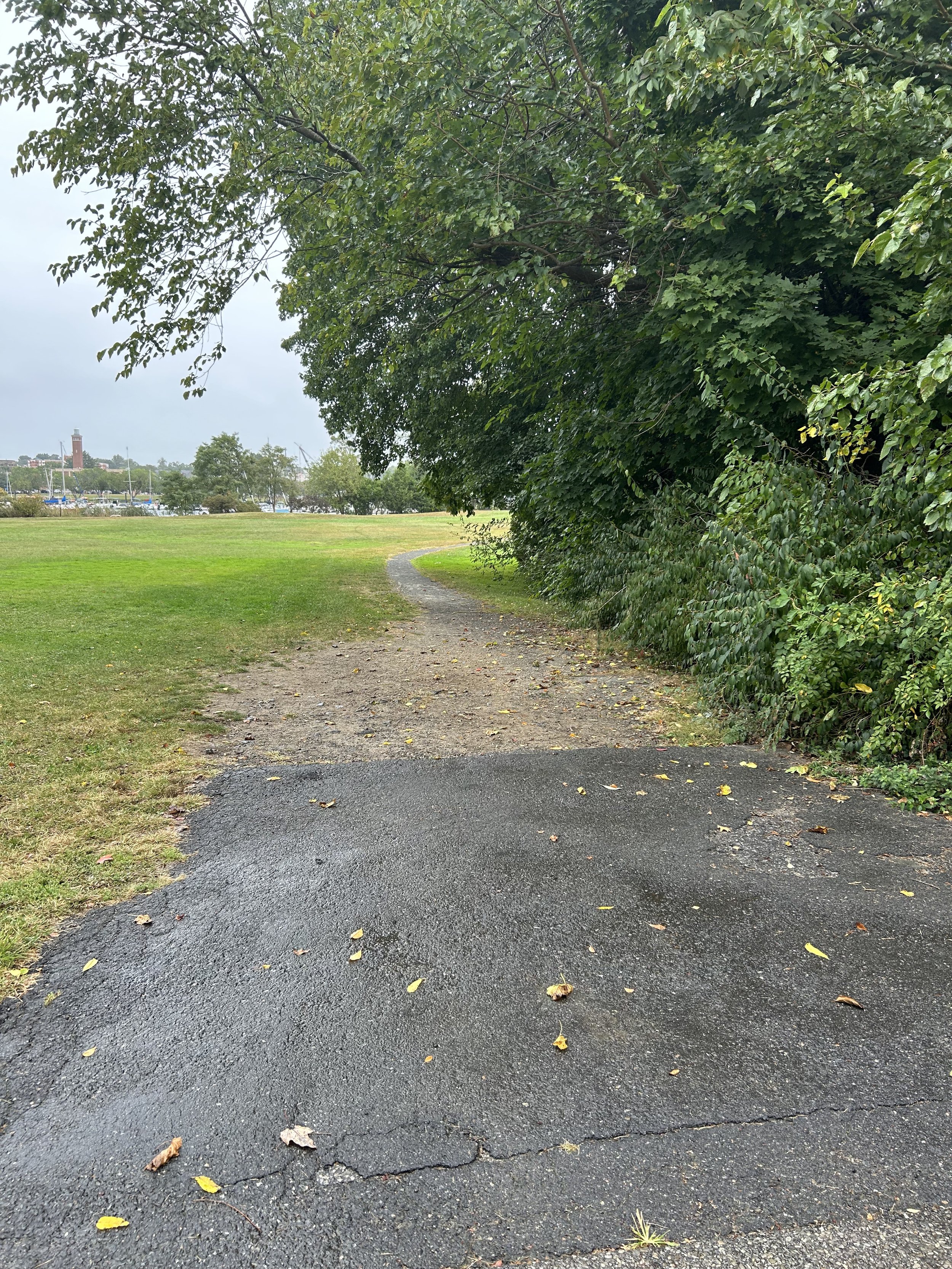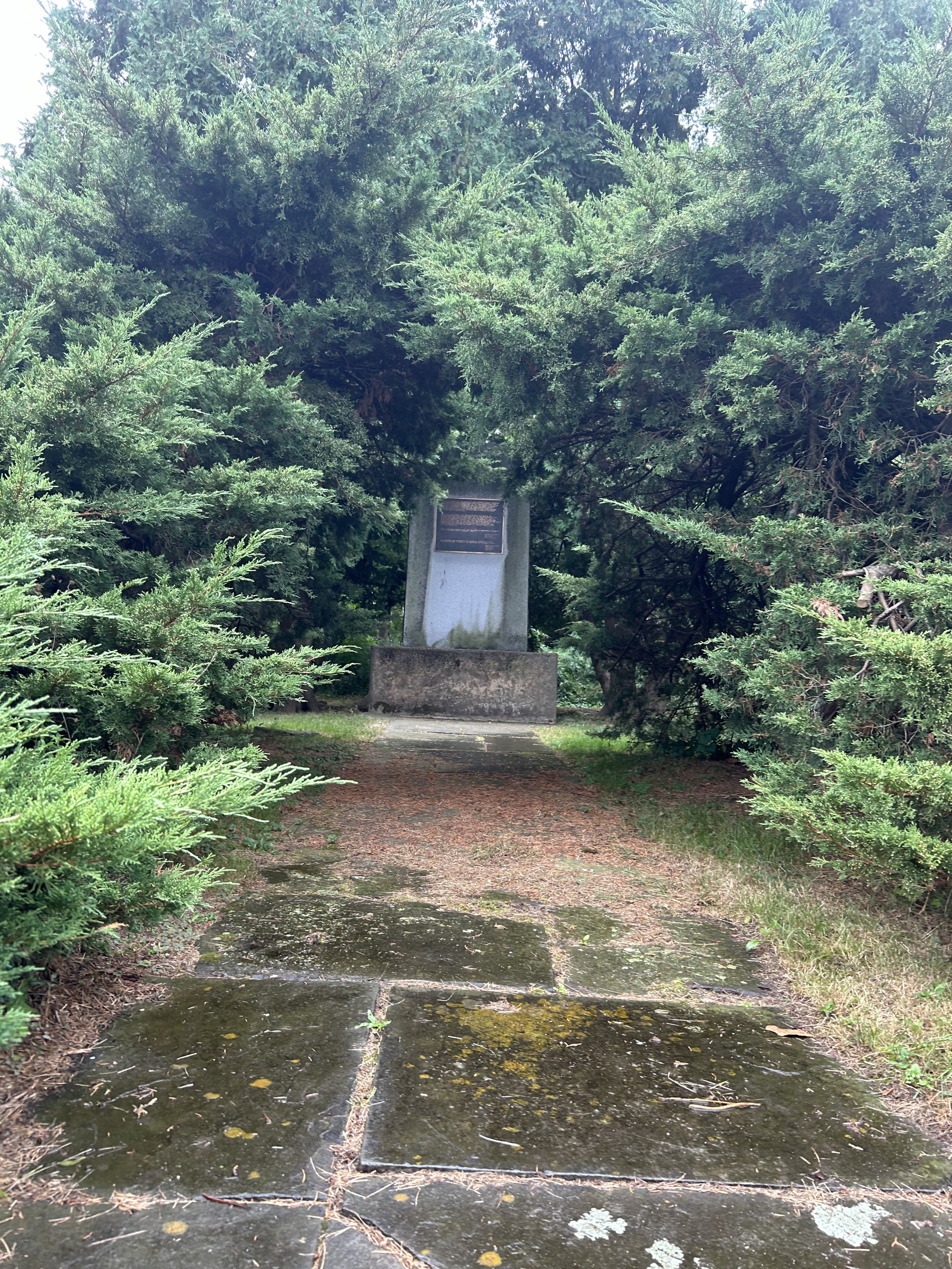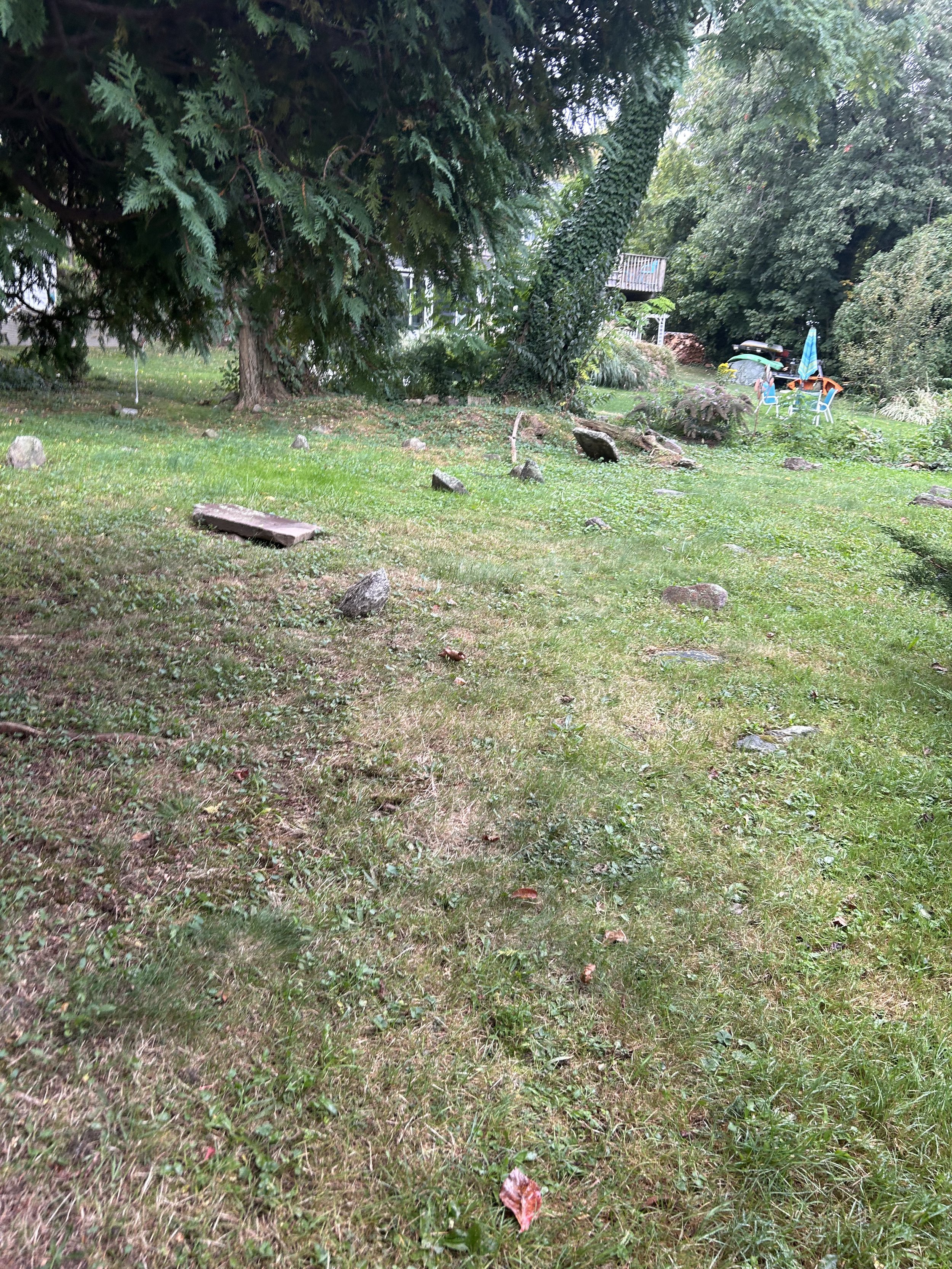Richbell Burial Ground
Follow the dirt path past the playground on Rushmore Ave
The Cemetery’s Residents

John Richbell (1616-1684) and Ann Parsons Richbell (circa 1629-1700) were the first enslavers of Mamaroneck. The site that stands before you is the Richbell Cemetery. Established in 1684, the cemetery is one of the oldest found in Westchester County. This cemetery includes the graves of John Richbell, Ann Parsons Richbell, Marjory Parsons (Ann’s mother), and Captain James Mott.
The Purchase of Mamaroneck

John Richbell was an English trader who bought Mamaroneck from two Indigenous people - Wappaquewam and Mahatahan - in exchange for tools and clothing. John and his wife, Ann Richbell, lived in Mamaroneck with their children for the rest of their lives. After receiving the land after John’s death in 1684, Ann gave thirty acres (including this burial ground) to her daughter, Mary, and Mary’s husband, Captain James Mott. Shortly after in 1697, Ann sold her house on Heathcote Hill and the remaining property she owned to Caleb Heathcote.
Additionally, in 1700, Ann Richbell wrote in her will:
The will was proved on February 19th, 1701, and the woman was freed.
Mamaroneck's First Enslaver

In 1647, John Richbell purchased 21 enslaved persons from Director Kieft of New Amsterdam. John Richbell took 19 of the enslaved individuals to Boston. In 1649, Richbell was responsible for chartering a ship of enslaved people from Guinea to Barbados.
In 1657, Richbell came into ownership of an indigo plantation in St. Christopher in the Caribbean. This plantation originally belonged to John Redman, Ann’s late husband. The plantation was operated on enslaved labor, to which Richbell exploited by renting out the island to enslavers before selling it in 1662.
When Richbell died in 1684, an inventory was conducted of his estate. It was written that Richbell had an enslaved woman as one of his “possessions.” Additionally, in 1700, Ann Richbell wrote in her will:
The will was proved on February 19th, 1701, and the woman was freed.
